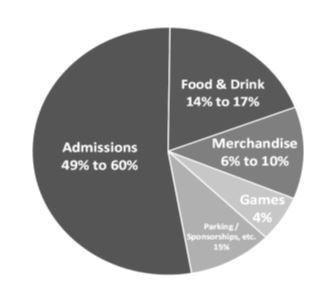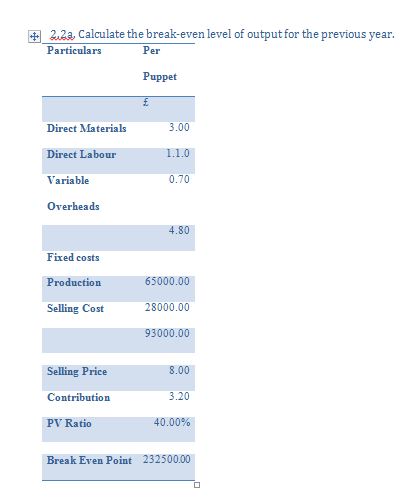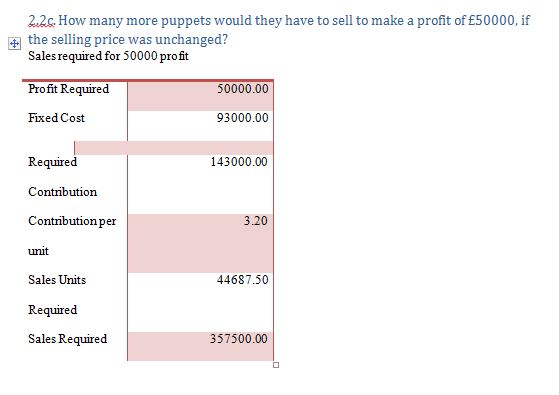- support@locusassignments.com
Unit 2 Finance in Hospitality Industry Assignment Sample

Introduction
The first part of this assignment focuses on the importance of various sources of finance and the impact they have on the organization as a whole. In the later parts importance has been laid on various methods of costing and how decisions are taken based on such methods.
Task 1
1.1 Review the sources of findings available to business and service industries
Capital is not only required to set up a business but a business may require additional funds or capital to carry on their day to day activities. The funds required by an organization will depend upon the type and size of the organization. Short term capital is required where the organization is in a need of working capital and long term capital is required for the expansion of the business.
Equity Financing:-
Equity Financing is the process of raising funds through by issuing shares. It is the most costly source of finance as it involves payment of dividend to the shareholders from the net profit after the payment of all government taxes, interest on debt and preference dividend. Hence there is always of risk of non-payment of dividend. It works as a base for creating the debt and loan capacity of the organization. (Carpenter and Petersen, 2002)
Debt Financing:-
Debt Financing is the process of borrowing funds from the outsiders. It carries a promise by the organization to pay a fixed amount of interest, at a specified time and also repay the principle amount at the end of the specified period. As the debt holders are the creditors of the company, in normal situation they do not have any voting rights in the company’s affairs. (Campello, 2006)
1.2 Evaluate the different sources of income that could possibly be generated from this theme park.
Theme Park Industry Overview:-
Theme Parks are generally engaged in operations such as mechanical rides, water rides, refreshments, picnic grounds, game shows etc. These are the areas of operations from where Theme Parks generate their revenues.
Sources of Revenue:-
Theme parks generally have both Direct and Indirect Method of generating revenue. Admission to the Rides & Attractions is basically the direct method of generating revenue while restaurants, picnic garden etc. are the indirect way of generating their revenue.
The biggest source of revenue comes from the direct method i.e. admission to the rides & attractions. Almost 80% of revenue comes from these sources. The theme parks divide their whole space intro rides and attractions, restaurants, picnic gardens etc. People get access to these areas after paying the requisite fees. Theme parks use the space to generate revenue from different sources such as admission to the areas of attractions and rides, shops, recreations, fishing. Theme parks sell their tickets which has a particular time span. (Adams and Perkins, 1991)
The main sources of revenue of theme parks are illustrated with the help of the figure shown below:-
Task 2
2.1 Identify examples of direct costs, indirect costs, fixed costs and variable costs incurred by Hotel Icon and Upper House
The various types of cost incurred by the hotel are as follows:
Direct Cost: Salaries, linens, crockery, food and drinks, retail expenses, occupancy cost.
Indirect Cost: Room cleaning supplies, fire insurance, supplies used in spa and gym.
Fixed Costs: Salaries paid to employees, Salaries to bus drivers and attendants, Maintenance cost, Salaries to restaurant staff, cost of operating spas. (Hundal, 1997)
Variable Costs: Food, Drinks, Cost of Operating Busses (Fuel)
2.2d. Evaluate the limitations of cost-volume-profit analysis
The cost volume profit (CPV) analysis is made under certain assumptions and undergoes certain limitations such as:
- It is assumed that for the purpose of CVP Analysis the production facilities do not undergo any changes. If reduction or expansion of capacity takes place it would give a misleading result.
- If the input price and output price will remain constant then only CVP Analysis will be correct. This is really difficult to find. If the selling price is changed or the cost reduction programme is undertaken then it would not depict a perfect correlation between the cost and profit. (Jaedicke, Robichek and A, 1964)
- It will be really difficult to forecast the volume of sales mix in case where a variety of products with different profit margins are produced.
- In CVP Analysis it is assumed that the variable cost varies at all level of activity whereas the fixed cost remains fixed irrespective of the change in the activity level. This assumption may not work in practical situation.
- Inventories are valued at variable cost and there is no element of fixed cost. Therefore, when the closing stock is carried over to the next year it does not contain any element of fixed cost which is a wrong assumption of CVP Analysis. Inventories should always be valued at full cost.
2.3 Firms in the travel and tourism industry can follow different pricing strategies to achieve profit. Analyse the different pricing strategies that can be followed by Icon and Upper House, taking into account the conditions they are currently operating in.
One of the key factors for the success of Travel and Tourism industry is formulating a proper pricing strategy. In order to ensure that the customers purchase your product it is important to set a price which is consistent, accurate and competitive.
The following are the Pricing Strategies that can be followed by Icon and Upper House:
Rack Rates:
All travel and tourism industry must have a Rack rate. It is the full rate without any discount printed on the brochures for the season ahead
Seasonal Pricing:
The standard way of pricing is to mix the price throughout the year to cover low and high for different level of demands due to the time in a year. These will be the same day in a year which may also apply for school holidays and local events.
Last Minute Pricing:
The last minute pricing is basically discounting daily prices according to the bookings made for accommodation of suppliers to fill those last minute gaps in inventory available.
Discounting:
To be in a better position in the competitive market discounting will be key strategy for the Icon and Upper House. By continually discounting the price to stimulate demands profitability has to be foregone or even missing the vital breakeven point. (Davies and Downward, 2001)
2.4 Evaluate how the management of the souvenir shop would control their stock and cash flow.
An organization has to keep a record of the stock as that can affect the profitability of the business. The carrying cost and the ordering cost has to be taken into account. In order to keep a tab on the cash flow and inventory the organization will have to assess the following:
- Economic Order Quantity: The organization has to keep a tab of the EOQ. EOQ is the quantity where the cost is the lowest. This comprises of the ordering and the carrying cost. For this the organization has to estimate the annual demand of the product and order accordingly. (Grubbstrom and Erdem, 1999)
- ABC Analysis: There are a lot of products which have to be purchased by the document. Generally 20% of the inventory makes up 80% of the cost and vice-versa. The company has to first understand the trend. It needs to focus more on the 20% and balance its purchases accordingly. Such 20% should be purchased at the last moment.
- Ratios: The business needs to have a clear understanding of the ratios. For example how many times has the stock been cleared and restocked. The business needs to have a clear understanding of this. The other important ratios are sales to stock ratio, sales per square feet etc.
Apart from the suggestion made above the organization can also have a Just in Time purchasing system and can have good retail software. This would allow the organization to save on the carrying and other related costs and keep the cash flow intact.
Task 3
3.1 The restaurant at Icon has requested a supplier to quote the price for the supply of caviar. The supplier has prepared the following standard cost information for a batch of caviar.
Calculate the direct material price and usage variance.
b. Calculate the direct labour rate and efficiency variance
c. Explain the possible reasons why these variances may have occurred
The variances may have occurred due to the following reasons:
- Material: The material usage is assumed to be 24000 units whereas the material used is 26400. The material conversion rate had not been properly estimated. The other cause of the variance is the difference in the rate of 0.25. (Drury, 1992)
- Labour: Labour was assumed to work for 39600 hours but worked actually for 40200. Machinery breakdown and repairs is one of the reasons. The other reason might be high turnover ratio. The rate assumed was lower than the actual rate by 0.20.
3.2 You have been recently appointed as a financial consultant at the Icon restaurant to assist non-finance managers. At a staff meeting you have been asked to explain the following;
The source and structure of the trial balance
The trail balance is mainly prepared to check the accuracy of the double entry system. The trial balance has two sides. The first is the debit and the other is the credit side. Every entry should have a debit and a credit aspect. All the debit figures are shown on the debit side and all the credit figures are shown on the credit side. This means that the total of the debit side should be equal to the total on the credit side. However where the debit and the credits have been posted to the wrong accounts the trial balance cannot detect such errors. (Coombs, 1981)
Discuss the budgetary control process and how this process helps management decision making at Icon Hotel.
Budgeting is an important tool by which an organization makes its future plans. It helps an organization to plan where it will incur cost and from where revenue will come from.
The process of Budgetary Control involves the following steps:
- Defining and specifying the objectives to be achieved by the business.
- Preparing business plans in order to ensure that the desired objectives are accomplished.
- Translating the plans into budgets, and relating the responsibilities of individual executives and managers to particular sanctions of the budget
- Continuous comparison of actual results with the budget, and the calculation of differences between the budgeted and actual performance.
- Investigating major differences in order to establish the causes.
- Presentation of the information to the management in a suitable form, relating the variances to individual responsibility. (Van der Stede, 2001)
- Corrective actions by the management in order to avoid a repetition of any wastage or over expenditure. Alternatively, where it is not possible to achieve the budgeted targets due to change in circumstances, the revision of the budget.
It would help management in decision making at Icon Hotel in a number of ways:
- It would give a clearly defined organizational structure, which emphasizes areas of responsibility.
- It would help to maintain adequate accounting records and procedures, so that the measurement of performance may be relied on.
- Participation by individuals within the budgeting process.
- Awareness by management of the uses of the budgetary control system.
- Awareness by the top management of the problem of budgetary control, and especially of the reactions of individuals to budgets.
- Flexibility, so that plans and objectives may be revised
Task 4
4.1 Calculate the following ratios and analyse the performance of the hotel for the last two years
4.2 Suggest future management actions and strategies based on your analysis above
Since the sales have increased by 12% from the last year the expenses of the company rose up to 23% resulting in a huge gross loss. The company should take initiative to control the outflow. Company is highly dependable on the external funds resulting an increase in the interest expense of 58% from the last year as a result of which there is a huge net loss of the company. In order to maximize profitability the company should take initiative to work on the financial performance. (Helfert, 1994)
Conclusion
The assignment solved above give us a clear understanding of Financial Management, Accounts and Costing system. The application of the above will help an organization to keep a closer look into its pricing strategy and build a strong background. ?
References
Adams, J. and Perkins, E., 1991. The American amusement park industry: A history of technology and thrills. Twayne Publishers Boston.
Campello, M., 2006. Debt financing: Does it boost or hurt firm performance in product markets?. Journal of Financial Resources, 82(1), pp.135--172.
Carpenter, R. and Petersen, B., 2002. Capital market imperfections, high-tech investment, and new equity financing. The Economic Journal, 112(477), pp.54--72.
Coombs, H., 1981. Trial balance. MacMillan Melbourne.
Details
Other Assignments
Related Solution
Other Solution


















